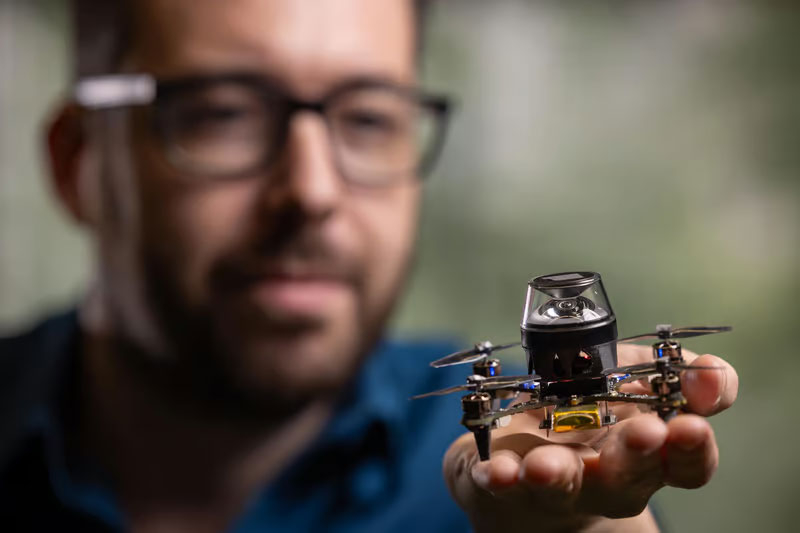
Ants and bees 'taught' tiny drones to navigate without GPS, beacons or lidars
In the Netherlands, scientists have created a small drone that can easily return to its starting point without GPS, using the methods of ants and bees to navigate the area.
Today, a navigation system for unmanned aerial vehicles in space, for example to return to base independently, requires either radio signals or powerful computing facilities. Such solutions are not suitable for working in conditions of limited connectivity or for small devices. At the same time, ants and bees have no problems with spatial orientation, despite their small size. It turns out that drones can do it too.
To remember the way back, ants combine two approaches. First, they take "panoramic pictures" of the surrounding area with their own eyes. Second, they "count" the number of steps between the places they remember. Comparing one and the other, the ant is able to return home after any journey. Aerial drones cannot count steps, although the ability to take panoramic photos is not a problem for them.
Drones can use a different method of odometry, like bees. Bees remember the speed of movement between locations by the speed of movement of the objects over which they fly. This also helps to remember the direction of movement.
Scientists at the Delft University of Technology (TU Delft) in the Netherlands have combined the two technologies into a tiny 56-gram drone called CrazyFlie, which is too small to carry a powerful autonomous navigation system.

While changing routes, he photographed the panorama of the area, and then remembered the time and speed of movement to the next shooting location. By tracking its own movement in the opposite direction, the drone was able to return to its starting point through a 100-meter maze using only 1.16 KB of memory.
The authors of the innovation note that one fine day, thousands of drones with similar technology will be able to independently carry out the work of inspecting objects, monitoring agricultural crops or even pollinating plants, relying only on the ant's ability to navigate the area.
- Related News
- Google's robot plays table tennis like a human (video)
- Figure AI introduces 2nd generation humanoid robot that is ready to work in industry
- Robot dentist working with AI treats human teeth for first time (video)
- Musk claims humanoid robots will be used in Tesla in 2025
- Robot dogs are already cleaning beaches from garbage, working in facilities
- Smiles like a human: Scientists have grown human skin for a robot
- Most read
month
week
day
- 10 most powerful, yet affordable smartphones of August 980
- Nvidia stock price fаll by 9% in one day: Investor's Brief 05.09.24 933
- Are we alone in the Universe? New study suggests intelligent aliens may be rare 845
- When and where will Tesla present its new product Robotaxi? 800
- After iPhone 16 presentation, Apple will withdraw at least 10 devices from sale: What are those devices? 786
- Does dark matter exist? Scientists get closer to detecting the most mysterious substance in the Universe 779
- Google, Amazon, Facebook are secretly listening to users to show targeted ads: CMG 753
- Asteroid explodes in the sky of Philippines (video) 748
- Antutu unveils best Apple device ranking: latest iPhones fail to make the list 695
- Strategic communication and new technologies: Zoya Barseghyan is the guest of "Did you know?" 690
- Archive
